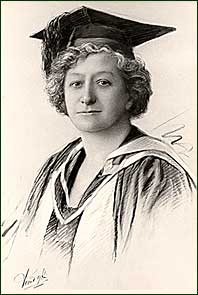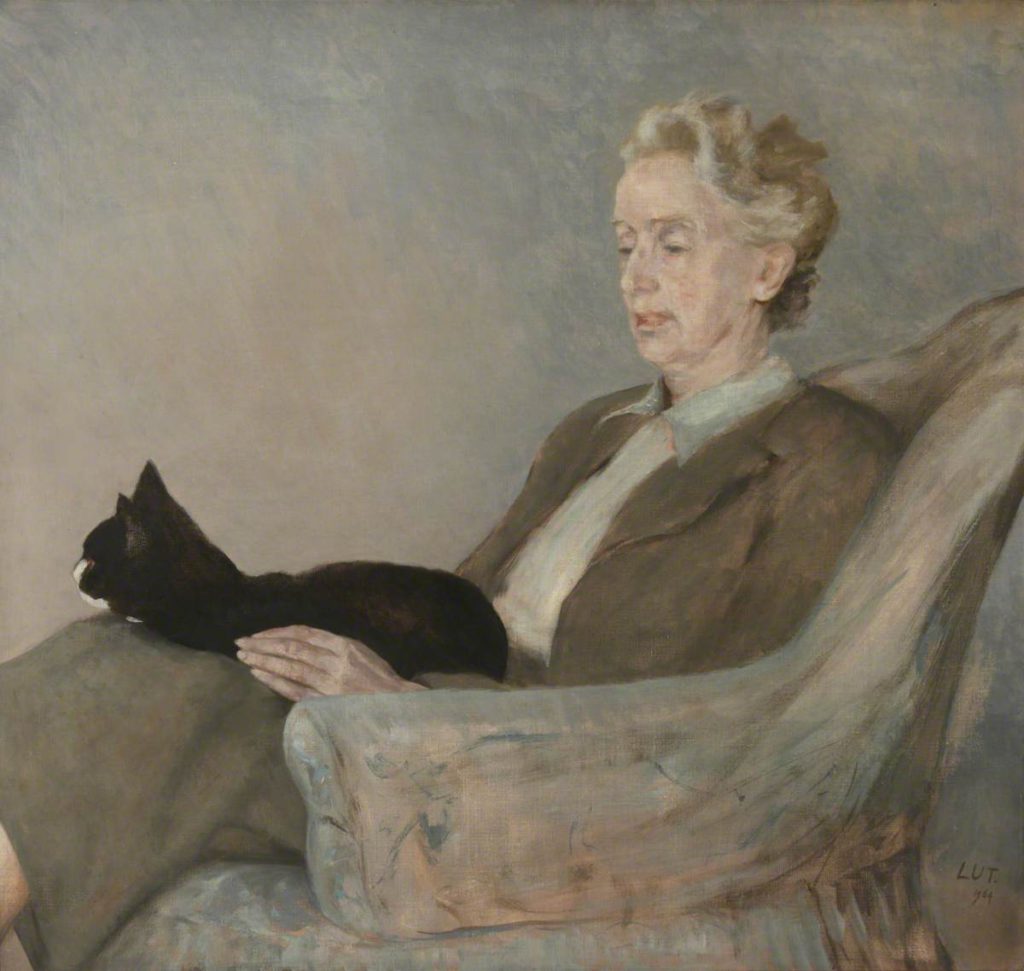By Professor Patricia Owens
We currently know very little, and certainly not based on archival work, about the history of women’s international thought inside the Anglo-American academy, the dominant locations of disciplinary IR. Academic women are only one – but an obviously important – part of the story of how women in the past thought about relations between peoples, empires, and states. In this blog post, I share some very preliminary findings, based only on a small portion of the British side of the archival work for this part of the Leverhulme Research Project.
First consider a puzzle. In IR’s intellectual and disciplinary history, women appear to be less present between the late 1940s and 1980s than at any time in the first half of the 20th century (Owens, 2018). This is puzzling because we tend to think of women’s position as improving through the course of the twentieth-century, especially as their access to higher education increased. So why does their position seem to regress in IR?
To illustrate, a very large proportion of what today we would consider core IR subject matter was taught by women scholars from as early as 1904 when Lilian Knowles began teaching imperial and great power economic history at the LSE.

Lilian Knowles
Women were among the first appointed to the earliest IR departments in the 1920s, such as Lilian Friedlander in Aberystwyth and Lucy Philip Mair, again at the LSE. In the United States, women’s international thought was institutionalised, most significantly at the Bureau of International Relations at Radcliffe College, in existence from 1924 until 1942. While there is no British equivalent, women’s colleges in Oxford and Cambridge appointed historians to teach international relations.
There is remarkable continuity between the interests of very many of these academic women and today’s core IR subject matter. Consider just two of the substantive themes and scale of global historical processes.
One, of course, was the mutual constitution of international and race relations. Outside the academy, for ‘race women’ activist intellectuals such as Claudia Jones, international meant neo-colonial relations. Inside the academy, Merze Tate, partly trained in Oxford, combined analyses of racial hierarchy with a quite realist approach to diplomatic history. What I’ve called ‘white women’s IR’ in Britain largely centred on the imperial background of diplomatic history and colonial administration, including works by Lilian Penson, Margery Perham, Lucy Philip Mair, Sybil Crowe, Mary Proudfoot, and Agatha Ramm. Clearly, their marginalization in IR’s intellectual and disciplinary histories is partly explained by this substantive focus. Imperial-international relations was itself later erased from IR’s disciplinary history (Vitalis, 2015).
But another prominent theme that fascinated early academic women makes their absence from IR’s intellectual and disciplinary histories much more difficult to explain. This is the centrality of power-political and geopolitical relations between different kinds of polities. Early geopolitical thinkers, like Ellen Churchill Semple, economic historians, like Knowles and Eileen Power, and diplomatic historians like Elizabeth Wisekmann and Tate, centred their analyses on the role of geopolitical/international (as well as imperial) relations in shaping national polities and economies. So how do we explain their marginalization given the substantive focus on IR’s core subject of power politics and diplomacy?
Part of the answer is related to a third preliminary finding and to assumptions about the fields and approaches through which a separate IR discipline should be formed. It is here that we can begin to address the puzzle of historical women’s partial presence in pre-disciplinary IR and a seemingly greater absence from the late 1940s to 1980s.
The vast majority of the IR women we’re finding in university and college archives were trained as historians engaged in often very practical and always empirically-grounded research. In contrast, the professionalization of academic IR involved a conscious break away from diplomatic history, especially in Britain. From the 1970s, IR largely organised itself around a set of ideological ‘isms’ and ‘Schools’. Diplomatic history was caricatured as incapable of advancing ‘theory’, the level of abstraction necessary for a distinct theory of the ‘international system’. This marginalized all of the women mentioned above. Unsurprisingly since it mirrors what we already know about the history of History and Sociology, it is starting to look as though the carving out of a distinct IR discipline was a gendered process.
Consider one of the most disparaged figures in the break from diplomatic history, Agnes Headlam-Morley, the first women to become a full Professor at the University of Oxford. She held the Montagu Burton Chair in International Relations between 1948-1971. An historian of Anglo-German relations and one-time would-be Tory MP, at Oxford she was a famed salon hostess and College woman.
The consensus among the chroniclers of IR’s history is that she failed to develop the subject because she continued to view IR as a subfield of History. In Ian Hall’s words, Headlam-Morley was ‘a staunch opponent of the study of contemporary international relations, let alone the use of newfangled social scientific methods’ (2012: 53). In any case, for Martin Ceadel, Agnes’s intellectual interests were ‘inherited’ from her father, James, an historian and senior civil servant who helped draft the Treaty of Versailles (Ceadel, 2014: 189). On this account, IR’s fortunes only revived after Agnes’s retirement in 1971 and the return to Oxford of Hedley Bull, who held the Montagu Burton Chair between 1977 and 1985.

Lutyens, Robert; St Hugh’s College, University of Oxford.
For others, the stakes were even higher than the fate and methods of a fledgling discipline. Headlam-Morley appears on the very last page of Carroll Quigley’s infamous book, The Anglo-American Establishment: From Rhodes to Cliveden,on the Anglophone network seeking to establish global racial supremacy through imperial federation. ‘[T]he great idealistic adventure which began with Toynbee and Milner in 1875 had slowly ground its way to a finish of bitterness and ashes’ when this ‘middle-aged spinster… with one publication to her credit’ sat in the Oxford chair (1981: 310).
I focus on Agnes Headlam-Morley not to endorse her international thought, a ‘great man’, ‘great power’ kind of history, and certainly not her politics. Nor because those dreams of imperial federation have been revived in Brexitland with talk of ‘Global Britain’ and the ‘Anglosphere’. And it is only partly to point to the obvious misogyny in how she is discussed, most clearly by Quigley, as well as the gendered and constitutive marginalization of diplomatic history in the process of making ‘disciplinary IR’.
Rather it is because the disparagement of Agnes Headlam-Morley, who supervised Merze Tate, seems to be more than ironic today. For it is not at all clear that the most significant and interesting international relations scholarship today is being conducted by the heirs to those who broke from diplomatic history to forge a new discipline of IR. Indeed, such work is just, if not more, likely to be pursued by the heirs to Agnes Headlam-Morley, and indeed Merze Tate: contemporary practitioners of the new international and global history.
Historians have long moved away from the study of diplomatic relations, narrowly conceived, towards the historical understanding of international and global dynamics, working with the many thematic, conceptual and theoretical moves that IR scholars import.
If there ever was time that IR could point to the outmoded character of diplomatic history as the raison d’être for a separate discipline that time has long past. As IR continues to move beyond and slowly recover from its ‘grand theory wars’, embracing mixed methods and genuine interdisciplinarity, it could do worse than enter into new and productive conversations with earlier generations of women thinkers, such as Headlam-Morley and Tate, who were constitutively marginalized in the process of what should be, but is not yet, the academic home of the best international relations scholarship.
Through this Leverhulme project, it’s been an absolute pleasure to work alongside contemporary scholars of the new international and global history, Headlam-Morley’s other heirs.
References
Ceadel, Martin (2014) ‘The Academic Normalization of International Relations at Oxford, 1920–2012: Structures Transcended’ in Christopher Hood, Desmond King, and Gillian Peele (eds.) Forging a Discipline: A Critical Assessment of Oxford’s Development of the Study of Politics and International Relations in Comparative Perspective (Oxford: Oxford University Press), pp.184-202
Hall, Ian (2012) Dilemmas of Decline: British Intellectuals and World Politics, 1945-1975 (Berkeley: University of California Press)
Quigley, Carroll (1981) The Anglo-American Establishment: From Rhodes to Cliveden (New York: Books in Focus)
Vitalis, Robert (2015) White World Order, Black Power Politics: The Birth of American International Relations (Ithaca, NY: Cornell University Press)


Leave a Reply